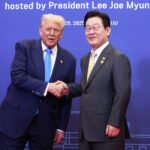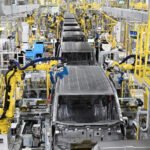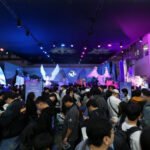
South Korean President Lee Jae Myung said on Friday that the US has agreed to support Seoul’s long-held pursuit of nuclear-powered submarines and expanded authority over nuclear fuel processing as the two countries released the final results of their trade and security agreement signed last month.
In a Joint Fact Sheet released on Friday, the two governments also committed to exploring measures that would enable not only US commercial vessels, but also US Navy ships to be built in South Korea, an opportunity that could generate a market worth several billion dollars annually.
“The US has given approval for South Korea to build nuclear-powered attack submarines. The US will work closely with South Korea to advance requirements for this shipbuilding project, including avenues to source fuel,” the Joint Fact Sheet states.
Lee describes the agreement as “a very meaningful advancement.”
Constructing nuclear submarines and US Navy ships is part of South Korea’s $150 billion commitment to revitalizing the US shipbuilding industry under the Make American Shipbuilding Great Again (MASGA) project.
The investment will consist of direct investment, payment gurantees and ship financing for shipyard modernization, workforce development and supply chain resilience.
“These initiatives will increase the number of US commercial ships and combat-ready US military vessels as quickly as possible, including the potential construction of US vessels in the ROK,” the Joint Fact Sheet states.
Shipbuilding industry officials said that Korean yards could become viable partners in construction and maintenance of US ships as the US shipyards face chronic labor shortages and output constraints.
However, major constraints remain. US law restricts the construction of certain Navy vessels to domestic yards.
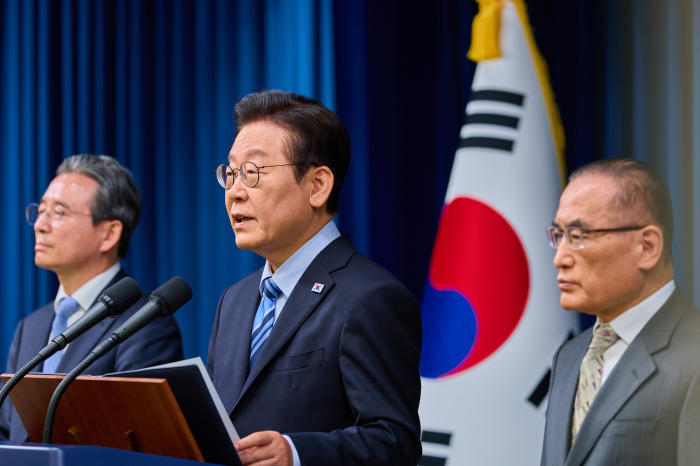
In return for Washington lowering tariffs on Korean products to 15% from 25%, Seoul will invest an additional $200 billion in the world’s largest economy, bringing total planned Korean investment in the US to $350 billion.
South Korean Trade Minister Kim Jung-kwan emphasized the pledged investments will focus on “commercially viable projects” that ensure the recovery of principal. Investment targets are scheduled to be selected by January 2029 before the end of President Trump’s second term.

Under the agreement, the US will reduce tariffs on automobiles and auto parts from 25% to 15%, while tariffs on oilfield equipment will remain at 15%.
The tariff reduction is expected to lower annual costs at Hyundai Motor Co. and Kia Corp., South Korea’s two largest carmakers, by more than 3 trillion won ($2.2 billion), according to industry analysts.
Tariffs on passenger and cargo aircraft, now at 15%, will also be lowered.
South Korea will also be treated no less favorably than any other country in future semiconductor tariff arrangements.
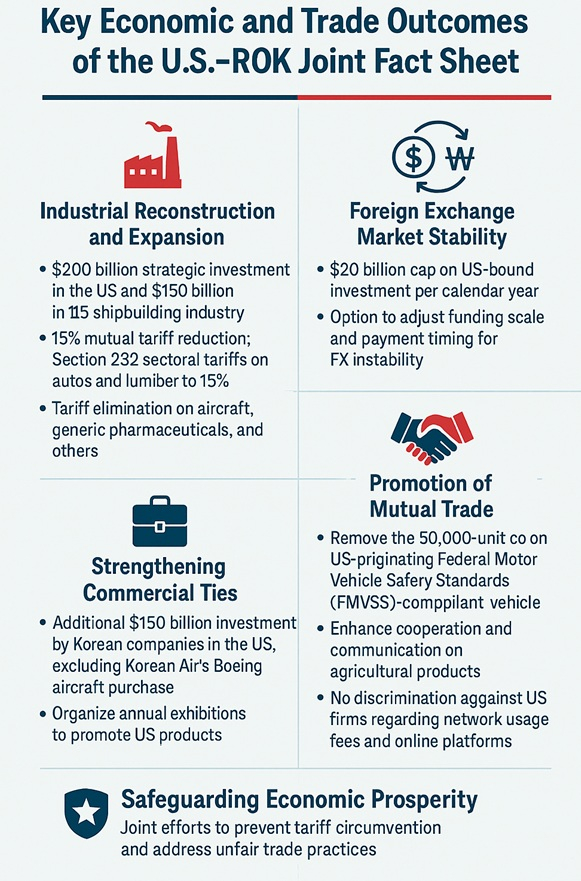
DEFENSE SPENDING
The Korea-US Joint Fact Sheet includes South Korea’s plan to provide $33 billion in comprehensive support for US Forces Korea over the next decade, marking the first time such a figure has been publicly disclosed.
The support package is designed to comply with South Korean legal requirements and encompasses both direct and indirect contributions, including defense cost-sharing under the Special Measures Agreement (SMA), land grants and tax incentives.
The fact sheet also confirms that South Korea will purchase $25 billion in US military equipment by 2030.
South Korea plans to raise defense spending to 3.5% of GDP “as soon as possible” in accordance with domestic legal requirements, which Trump welcomed. Its defense spending currently stands at about 2.32% of GDP.
“During a bilateral meeting (with Trump), we have made clear our determination to take the lead in the defense of the Korean Peninsula through stronger defense capabilities and wartime operational control transfer,” Lee said.
Based on estimated nominal GDP growth of 3.4% and annual defense budget increases of around 7.7%, Seoul is projected to reach the 3.5% target by 2035.
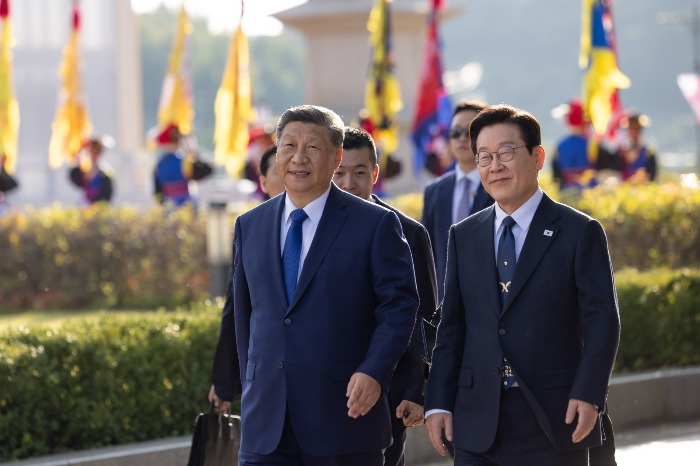
Meanwhile, Lee said that President Xi Jinping has agreed to continue strengthening economic cooperation and exchanges with Seoul and to “take time to address factors that hinder cooperation.”
“Rejecting countries with different views is a very foolish act,” Lee noted.

